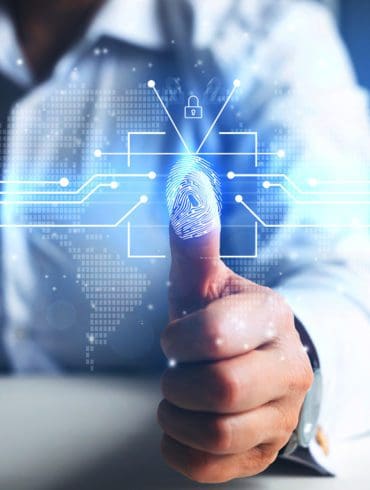Bank of America has struck a partnership with Samsung to start a pilot program that will allow Bank of America customers to login using a picture of their eye; the program will start with a group of 1,500 Samsung and Bank of America employees who will test the authentication for six months; according to a past report by American Banker, about half of Bank of America customers login to the mobile app using their fingerprint and the other half login with a username and password; according to Finovate, Samsung debuted this iris scanning technology at their Unpacked event in March and they claim it to be more secure than fingerprint scans. Source
FST Biometrics has raised $40 million and is developing a solution for facial recognition that detects your identity while you are in motion; the biometric technology presents a new solution for security identification; by detecting your identity it can be used to unlock doors and provide various other types of security access. Source
With apologies to Marc Andreesson who famously said several years ago that software is eating the world, I think that...
Many fintechs are considering changes to make their UX as slick and polished as possible, especially in authentication.
Wells Fargo has been active in biometrics; in 2014 it launched a startup accelerator led by EyeVerify which it now uses for eyeprint verification with its commercial banking customers; it is also working with Kasisto in its startup accelerator and plans to launch some virtual assistant offerings for employees and customers; it has also now announced a refocused effort in its Innovation Group that will be dedicated to AI, payments and application platform interfaces; Wells Fargo's management is committed to biometrics and the firm wants to be a leader in the technology with a specific focus currently on voice recognition. Source
French bank BNP Paribas, along with Daon, has developed a new biometric login for their wealth management clients using their mobile device; the new service is called myBioPass and it allows users to login using a selfie; transactions are then authorized by fingerprint or voice recognition; the service is currently active for Luxembourg clients using iOS mobile devices; myBioPass will be added to desktops and Android devices later this year. Source
As consumers reel from yet another massive data hack, this time of Equifax, fintech leaders are looking to solve the problem to prevent future hacks from happening; Chris Skinner offers up a couple of solutions that corporates and financial services firms should implement; biometrics & touchID, though these are not hack proof, and blockchain technology; he points out the power and security of the blockchain in helping to keep personal data secure. Source.
Amazon is currently in the early stages of building a new checkout terminal for coffee shops, fast-food restaurants and other...
As artificial intelligence (AI) provides new tools to criminals, Incognia's tools are 17 times more effective than facial recognition.
According to Hong Kong regulatory officials, two banks have applied to trial biometric technology under a recent fintech sandbox initiative; Hong Kong Monetary Authority Chief Executive Norman Chan notes that the companies want to use biometrics to authenticate securities trading; the fintech sandbox was launched in September; other banks are considering utilizing the sandbox for other areas such as blockchain and artificial intelligence. Source



